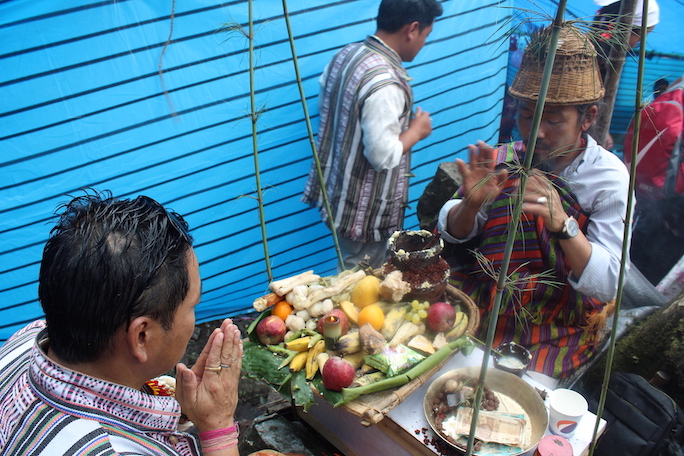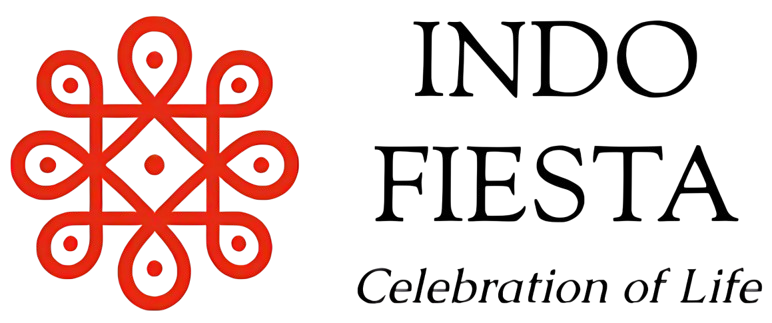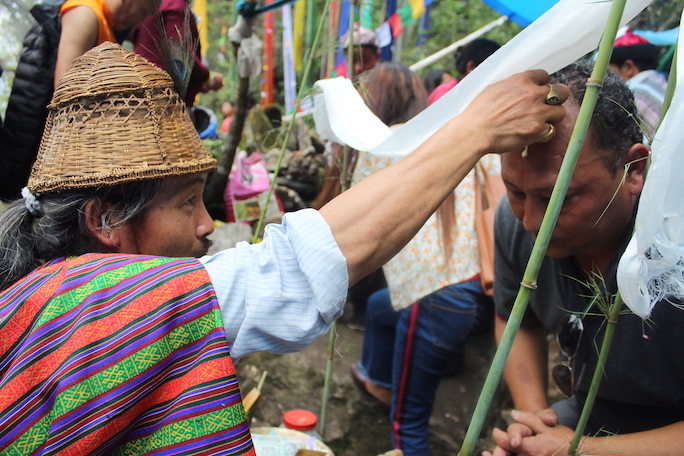The healers will pave the path to come out of chaos. Planet earth and all beings need healing. Nature knows how to heal herself, human beings are the ones who have lost their connection with nature. We need Shamans to teach ancient wisdom to heal the planet and human beings. Healing practices is an understanding of our relationship to the world around us. We are not separate from the cosmic and natural forces that exist in all that is created in this Universe.
Every Himalayan Community has Faith Healers called Shamans, a ritual specialist who is the first line of help for villagers to propitiate ancestors, benevolent deities and evil spirits, and cure both humans and animals of sickness and ill health. Faith healing has never been a profession. As before, it is carried out as service to sick and needy or to respect ancestors and nature, which is why most shamans take up odd jobs such as farming, labour, homeopathy, and carpentry to eke out a living. The word shaman originates from the Tungus tribe in Siberia, that means, “one who sees,” or, “one who knows the origin.” Anthropologists coined this term and have used it to refer to the spiritual and ceremonial leaders among indigenous cultures worldwide. The word shamanism can be used to describe the ancient spiritual practices of these indigenous cultures.
A focus on Indigenous Wisdom for the well-being of people and the planet.
Shamanism stems from nature itself. Shamans tap into the power Mother Earth has to offer and the ancient indigenous teachings are derived from the simple truths of nature.
Indigenous People have lived for thousands of years in harmony with the land, where deep spiritual connections to the land impact overall health and wellbeing. Indofiesta founders strongly believe that it’s time to listen to the wisdom of Indigenous people and forge a sustainable future for people and planet health. From an Indigenous lens, healing incorporates more than the physical recovery; physical, emotional, mental, and spiritual healing exists through learning, which occurs along the healing journey. This healing journey has no definite beginning or end, and as we begin to move away from pathologizing healing to a strength-based healing process, the focus shifts to relationships—relationships with self, community, more than human, and the land. We must acknowledge the coexistence of learning during the healing journey. Building healing capacity through learning elucidates the understanding of the past, the needs of the present, and lays foundations for the future to work towards restoring integrity and prompting balanced care. Learning to approach and connect with sacred places is an intrinsic part of shamanism. By honoring natural wonders such as rivers, lakes, mountains, and caves, we reawaken and invigorate the energy of the land.

Jagar in the Hills of Uttarakhand
Jagar is a Hindu form of Shamanism which is practiced in the hills of Uttarakhand, both in Garwhal and Kumaon region. As a ritual, Jagar is a way in which gods and local deities are woken from their dormant stage and asked for favors or remedies. The ritual is connected to the idea of divine justice and is practiced to seek penance for a crime or to seek justice from the gods for some injustice. The word Jagar comes from the Sanskrit root, Jaga, meaning “to wake”.
Music is the medium through which the gods are invoked. The singer, or Jagariya, sings a ballad of the gods with allusions to great epics, such as the Mahabharata or Ramayana, in which the adventures and exploits of the god being invoked are described. After evolving over time, Jagar singing has transformed into an art form that is greatly cherished, the exponents of which are often heralded as living heritage.
These traditions are part of Folk Hinduism, which has co-existed alongside mainstream Hinduism and is prevalent across the Himalayas. The hard life within the Himalayas and constant exposure to the vagaries of nature inspired a strong belief in paranormal phenomena and in numerous folk gods, who were given great reverence and respect. Every village has its own god, called Bhumyal or kshetrapala, protecting its boundaries. Each family has its own kuladeva or kuladevi. In addition, there were numerous other benevolent demigods and goddesses that could reward people, as well as malicious spirits that could torment people. These practices are similar to shamanistic traditions prevalent in ancient rites around the world. While most of these deities have been lost or incorporated into monotheistic practices, Hinduism has strong kuladevata traditions that enabled the Jagar tradition to grow in India and Nepal. In particular, the isolation of the Kumaon and Garhwal due to the Himalayas promoted the emergence of local religious traditions, which are still strong in these regions along with mainstream Hinduism.
Jagar ceremonies generally have three primary types. The first is the Dev Jagar, or the invocation of a god, which usually includes local gods occupying the body of the medium. The second is the Bhut Jagar, or the invocation of a deceased person’s spirit or soul in the medium’s body. Other less frequently practiced forms include the Masan Puja.
Jagariya: The Jagariya is the singer of the ballads of the gods who leads the rituals and invokes the gods by calling upon them. The Jagariya is assisted by two or more men who sing along with him in the chorus.
Dangariya: The Dangariya is the person , whose body is used by the gods when they incarnate. The word Dangariya comes from the Kumaoni word Dangar, which means way. The Dangariya is the one who shows the way for the gods.
Syonkar: The Syonkar is the person who has organized the Jagar to seek divine intervention to his problems. The Jagar is held at the Syonkar’s home.

The Many Lives of Sikkimese Faith Healers
Jhankri: The word jhankri means faith healer in Nepali, the lingua franca of Sikkim. He/She is the first line of help for villagers; someone who falls into a trance, during which a voice speaks through him/her, enabling him/her to divine illnesses, heal the sick or give advice on the social and health affairs of the community. Faith healers are therefore seen as an intermediary between spirits(who cause and cure illness) and humans; between the past, present and the future; between life and death; between the individual and society as a whole.
The term jhankri and dhami or bijuwa are often used interchangeably between ethnic groups like chhetri, Bahun, Thakuri, Sanyasi, Jogi, Kami, Damai, Sarki, etc. Other ethnic groups have different words. These include mun/pudim of the Lepchas, pawo/nejum of the Bhutias, mangpa/mangma of Rais, phedangma/samb/yeba/yema of the Limboos, poibo/ngyami of the Sunuwars, guruamma of the Thamis, Klhebri/poju of the Gurungs etc.
Faith Healing is found among almost all ethnic communities of Sikkim. Formed after years of cultural assimilation, it is perhaps affiliated to animism and polytheism, which is why ritual specialists dwell on and accentuate the five elements of creation — earth, water, fire, air and ether — while setting up a sacred space for rituals and ceremonies.
The perception of the five elements vis – a -vis the human body and the universe, and its spiritual quintessence coupled with the jhankri’s transcendental state help the latter diagnose the cause of a person’s illness — whether elemental spirits or other causes — and work towards healing the patient. Most faith healers after years of complex apprenticeship believe in the world concept where humans reside; and the upper and lower worlds, which deities and spirits both malevolent and benevolent, inhabit. They perceive the upper and lower worlds have seven distinct levels.
To explore the lower and upper worlds, jhankris, it is said, need to establish a good rapport with ‘spirit-keepers’ of sacred places where their souls are connected to those spirits residing in mountains, lakes, rivers and valleys. Good relations with these spirits entail success in healing a sick person. For instance, when a jhankri from Sikkim travels to Bengal, Nepal or Bhutan to divine and cure a sickness, they will first invoke the spirit-keepers residing in mountains or lakes of Sikkim before invoking spirits of a foreign land. Once the faith healer has a grasp of these worlds, he explores it, and by soliciting help of the deities or their helping spirits can diagnose the cause of the ailment and find a solution to cure it. Jhankris who have knowledge of herbs and its medicinal benefits also use them to treat patients.
At the core of a ritual offering be it the harvest offering, marriage, birth of a child, or a healing ritual is the oral invocation, learnt through years of apprenticeship and recited by heart by jhankris. They communicate with the gods, deities and spirits that have taken possession of the human body through these invocations. There are variations of the oral invocation — the base of all rituals of bonism and animism — in various ritual occasions. It depends on whether the ritual is performed in honour of the protecting deities, or for ancestral gods, or for supernatural beings.

Jhankri Paraphernalia
Shaman’s paraphernalia may range from sacred costumes and musical instruments to sacred plants and animal parts. For shamans, these sacred implements embody the spirits, sacred cosmology and origins of the shamanic world.
Jhankri wear special costumes and perform ritual ceremonies, particularly Guru Puja. Their long white skirt with 108 pleats is called jama, often gathered on the hip with a colourful bandoleer, a white bhoto or shirt, and a healing bag to hold herbal medicines, prayer beads and a ritual dagger, khurpi. The white colour symbolises purity.
Shaman’s head-dress is made of peacock feathers and porcupine quills along with red and white streamers, and feathers of other birds such as kalji pheasant, monal, etc. Peacock feathers represent spiritual and physical purity and are a symbol of shamanic power, soul flight, journeying healing and dispelling ignorance or darkness. Porcupine quills are used for protection of the self and the house, for better concentration and focus, and as a link between birds and mammals. It is one way for the shaman to remain connected to the middle world spirits.
Jhankris hold a golden drum (dhyangro) in their left hand in front of the chest and face, while a curved stick (gajo) is held in the right hand to beat the drum. Shamans have an assistant who uses jhyamta (a two-piece cymbal) as an accompaniment to the drum. In important rituals such as Guru Puja, seance and healing rituals, some jhankris wear four rudraksha necklaces. Attached to these necklaces are several iron or copper bells fixed onto metal chains and tied to the bandoleer.
It is often cited that, besides his drum, a shaman’s power lies in the first rudraksha necklace, a sign of Mahadeo. Unlike the second, third and fourth necklaces, the first necklace, which is made up of 108 rudraksha beads, is not worn as a bandoleer but hung over the shoulders curved on a shaman’s chest and back.
The second necklace has 78 beads, of which 74 are rudraksha beads, and three are small black bells representing Brahma, Vishnu and Mahesvara. The last is a black bell symbolising the jhankri spirit’s eldest brother.
Similarly, the third necklace — also a representative of one of the jhankri spirit brothers — consists of 78 rudraksha beads, attached with silk reeds and two small copper bells. The fourth necklace, which represents the shaman himself, has only 108 rudraksha beads.
The donning of these necklaces for protection, honouring the deities and harmonising body pressure also speak of the shaman’s relations with his spirit brothers. The necklaces worn by a shaman are usually passed down through generations, or the shaman is asked to wear them by the spirits. Some powerful shamans also wear Sarpa Mala or a necklace of snake vertebra, which represents the naga deity, the keeper of the lower world and the earth realm. It also reminds the shaman that everything is guided by transformation and change.
Sunuwar jhankris called poibo/ngyami and shamans of other Kirat ethnic groups have additional bells of different shapes and sizes slung sash-style over the shoulder. The number of bells can vary from eight to twelve. Each bell represents spirits of the dead. A few (usually one to two) represent benevolent spirits. The rest represent evil spirits such as birmasan ( a powerful evil of the cremarorium), kabirmasan (evil from a stream), pakhamasan (evil from dry terrace land), himalmasan (evil that appears in flocks), dobatomasan (evil from crossroads), and ekleymasan (a solitary evil).
On some of these bells are attached small metal discs, which produce sounds that are believed to frighten the evil spirits when the shaman shakes and dances. A shaman’s pouch also holds two miniature sickles, a wooden thimble (to be used in offering water to the wandering spirits), and wooden lance adorned with red and white ribbons.

Our Idea is to create the infrastructure of a self-discovery village where we work with Himalayan Shamans and pay respect to the five elements; Earth, Water, Fire, Air, and Space.
Shamans are highly spiritual men and women who are believed to be visionaries and spiritual intermediaries. They spend their lives in pursuit of connecting with the nature of the universe. Usually, this pursuit of connection comes from a desire to better perceive truth and ultimate reality. This often takes the form of the shaman trying to understand his or her culture’s religion, deity, or nature itself. Through Shamans we communicate with nature and the spirit realm, to guide the human realm and sustain the balance between the dimensions. The importance of shamans as keepers of sacred natural sites and shamanism as the way to keep the human realm, the realm of nature and the realm of spirit and ancestors interconnected and imbued in human consciousness. There are thousands of shamans in the Himalayan region, all have undergone the bawal and are now well integrated in the society. The people in this region emphasize the fact that their area is the abode of the divinities and as a result they call it as devbhumi – the land of gods. The gods themselves are the archetype personalities, males, females, children, agriculturists, cattle grazers, and flutists. The plethora of divinities is culturally developed in relation to the needs and requirements of the people and shamanism is one area where the psychologically disturbed people get therapeutic help and rehabilitation. There is thus a need to systematically examine the psychotherapeutic potential in the shamanism of the Himalaya.


